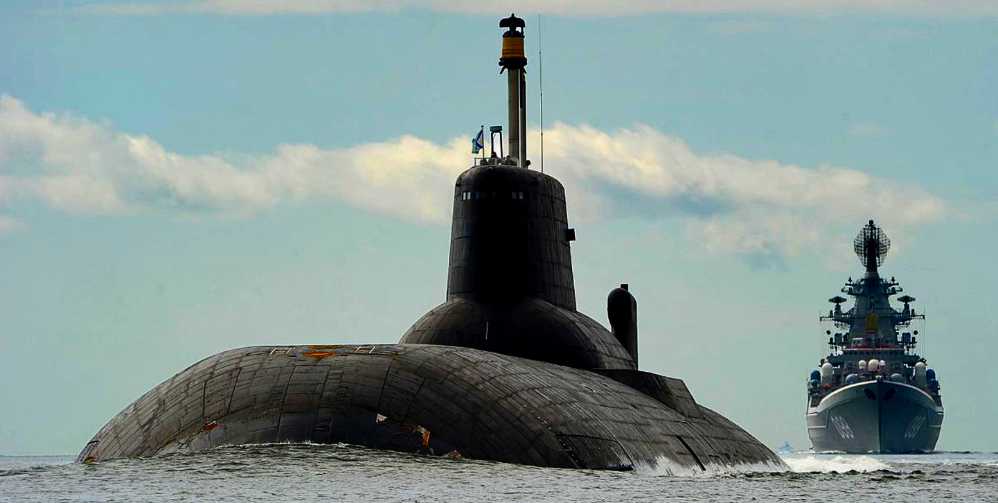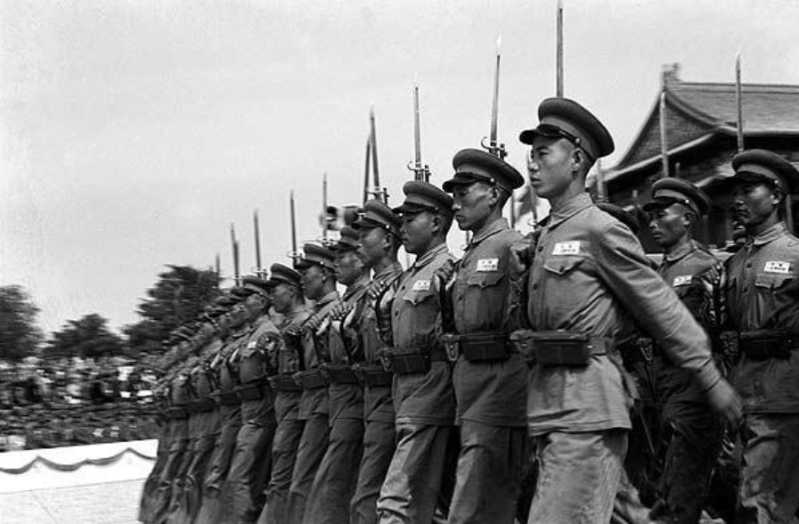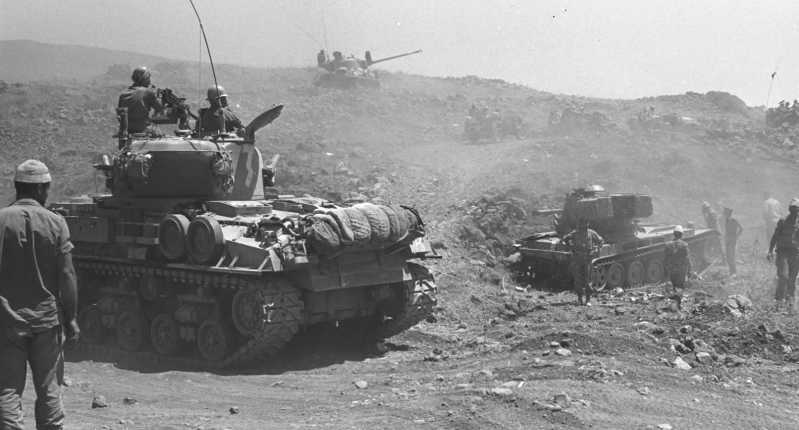The "sharp blade" of the 941 type
In order to ensure the nuclear strike power of the 941 type, the Soviet Navy equipped it with the P-39 ballistic missile of the -19 missile system, which was the first sea-based solid long-range ballistic missile equipped on a large scale by the Soviet Union.
In June 1971, the Military Industrial Committee decided to develop the D-19 weapon system using solid fuel and equipped with single warheads or independently guided warheads. At that time, the projection requirement for this type of missile was to ensure that it was equipped with 3 to 5 medium-equivalent or 8 to 10 small-equivalent nuclear warheads.
The design of the scheme was completed in July 1972, that is, a 75-ton solid three-stage missile was arranged in a launch device with a diameter of 2.7 meters and a height of 15 meters. The initial design was to merge the second-stage nozzle with the first-stage front head, and the third stage used a four-component engine, which was arranged between the second stage and the warhead together with the warhead; in the warhead, an instrument cabin and a MIRV engine were set. To adapt to the submarine structure, the missile used a 7-ton launch vibration reduction system, replacing the launch platform with a vibration reduction ring, and the vibration reduction ring was wrapped around the missile and installed in the launch device. The missile was launched by a 4-ton booster engine, which was ring-shaped around the nozzle of the first-stage engine of the missile. For the rocket engines of each stage, it is best to share the technical achievements of other intercontinental missile projects. Finally, the first-stage rocket engine was selected to be the same as the first-stage rocket engine of the PT-23 (15Ж44) and PT-23yTTX (15Ж61) railway mobile intercontinental missiles.

In addition, the selection scheme for engineering design also includes the traditional layout scheme with stage compartments, which is not so compact. If the first-stage and second-stage engine assemblies are not combined in the same component, the length of the missile and the height of the launch device will be greater. Obviously, the traditional method is too demanding on the size of the submarine.
In 1973, the Soviet Council of Ministers passed the "October Resolution" to build the "Typhoon" sea-based missile system, and the experimental development of the D-19 system also began simultaneously. The engineering design was completed in December 1974. In this design, a scheme of using stage compartments was proposed, and the missile’s missile length, launch weight and payload were increased. In June 1975, the engineering design plan was supplemented. In the new plan, it was proposed to equip only one type of warhead (10 small-yield warheads), and the third stage used an integral engine, with a gunpowder accumulator instead of a booster engine. The accumulator was installed at the bottom of the missile launcher, in the nozzle area of the first-stage engine.
During the development process, the design unit modified the missile layout, used different solid fuels, clarified the performance of the engine and the on-board control system, and combined with other program contents, the final result was that the height of the missile launcher increased from 15 meters to 16.5 meters, and the weight of the missile increased. The missile with a launch vibration reduction system weighs 90 to 95 tons depending on the fuel. In August 1975, the Council of Ministers determined the final plan for the P-39 missile.
In May 1983, the Council of Ministers issued a resolution that the P-39 missile would be put into service and put on combat duty on the 941 model. The P-39 has a take-off weight of 90 tons, a length of 16 meters, and a diameter of 2.4 meters. Indeed, only the huge 941 type can accommodate 20 missiles and avoid forming a turtleback structure; its maximum range is about 9,000 kilometers, which is higher than the "Trident" C4 missile at the time; its maximum throw weight is 2.3 tons, which is significantly higher than the 1.5 tons of the US "Trident" C4, but lower than the 2.8 tons of the "Trident" D5 equipped in 1990. The 2.3-ton throw weight ensures that it can carry a heavy re-entry vehicle, 10 100,000-ton light sub-missile warheads, and electronic countermeasures equipment.
Mission application of the 941 type
The large number of Soviet nuclear submarines in service: rapidly improved the overall combat effectiveness of the Soviet Navy: this not only refers to nuclear deterrence capabilities, but also includes a large number of long-distance and combat patrol mission capabilities. From February to March 1966, a Soviet 627 attack nuclear submarine and a 675 cruise missile nuclear submarine sailed around the earth in a submarine voyage of 46,300 kilometers in 45 days. This capability demonstration also laid a solid foundation for the strategic nuclear submarine duty two years later. The Soviet Navy’s strategic nuclear submarines approached the United States for combat duty, and the patrol area also included the Caribbean Sea, especially the sea area near Cuba. After the Cuban Missile Crisis, the Soviet Navy returned to Cuba only a few years later.
In July 1969, seven years after the Cuban Missile Crisis. A Soviet 627 attack nuclear submarine, two 641 conventional submarines, and a submarine supply ship formed a task force and entered the Caribbean Sea. Compared with the 641 conventional submarines during the Cuban Missile Crisis, this fleet was much more heavyweight. And except for the nuclear submarines, all other ships visited Cuba. One year later, in May 1970, after the Soviet Union’s "Ocean 70" exercise, a Type 675 cruise missile nuclear submarine, two Type 641 and a submarine supply ship visited Cuba again. This time, the nuclear submarine was anchored in Havana, Cuba. Half a year later, the Soviet Navy’s task force came to the Caribbean again, including a missile cruiser, a destroyer, a submarine supply ship, an oil tanker, and a Type 1171 tank landing ship, which also carried two barges. At that time, the United States judged that the two barges were used to protect nuclear submarines, and the barges remained in the port of Cienfuegos. In April 1972, a Type 629 conventional ballistic missile submarine and a submarine supply ship of the Soviet Navy entered the Caribbean. Since then, Soviet strategic nuclear submarines have also begun to operate continuously in the Caribbean.
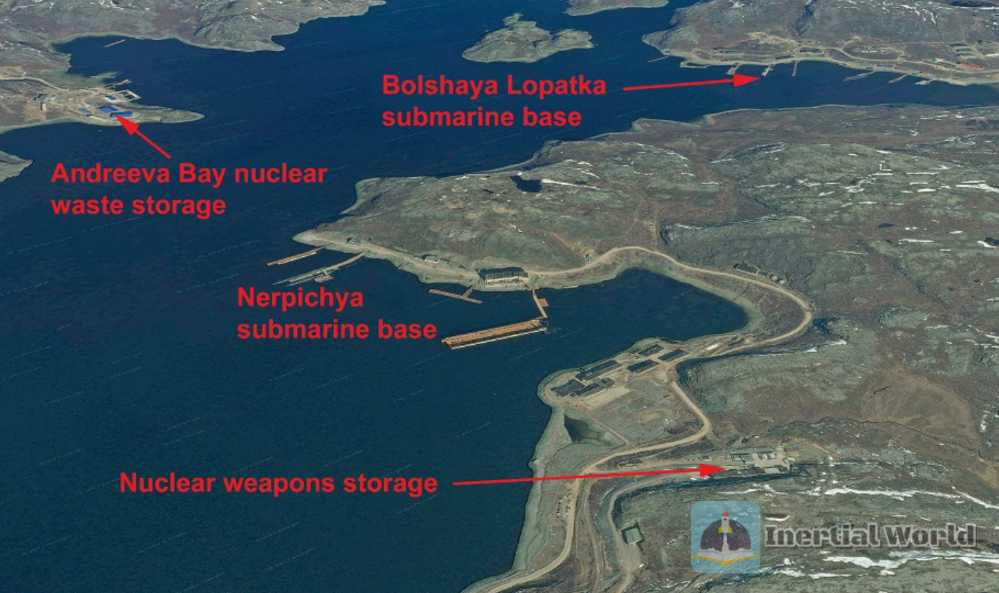
The Soviet Navy returned to Cuba, deployed strategic nuclear submarines near Cuba, and established a support system in Cuban ports. This "sausage slicing" forward deployment was quite successful in the 1970s and established nuclear deterrence in front of the United States. After all, the United States was facing multiple difficulties at the time, and the general environment was "Soviet attack and US defense." When the Type 941 was in the design stage, the Soviet Navy was also prepared to use it in this way.
The Type 941 is based in Nepicia Bay on the Kola Peninsula, only 57 kilometers from the Norwegian border. There are 4 ports in the bay, including the nuclear submarine maintenance and support base on the north side, the attack nuclear submarine berth on the south side, and the Type 941 and other strategic nuclear submarine berths on the east side; the west side of the bay is Avtna Port, which is also the Soviet nuclear Submarine maintenance and support base. At that time, NATO discovered through aerial reconnaissance that the total length of available docks in Nepichia Bay was about 20,600 meters, and the nearby Polyarny Port included the berth and maintenance support base for conventional submarines of the Northern Fleet.
All six Type 941s were concentrated in the 18th Submarine Corps of the 1st Submarine District Fleet of the Northern Fleet. This "No. 1 Corps in the World" (the division was equipped with six Type 629 conventional ballistic missile submarines for most of the 1960s; from the 1970s to 1983, it was equipped with Type 658 strategic nuclear submarines (usually 5 to 6). Later, due to frequent failures and poor missile performance, the strategic nuclear weapon launchers of this type of submarine were gradually removed, and only torpedoes were equipped, and the level was changed to "large nuclear submarines". However, the corps was equipped with Before the Type 941, the main task was to covertly break through the defense lines set up by the United States and NATO allies on the GIN and GIUK waterways, approach the east coast of the United States or enter the Caribbean Sea, and conduct duty patrols. The corps has never used the Type 667A strategic nuclear submarine. It can still complete the mission using only the Type 629 and Type 658. After being equipped with the Type 941, it can be said to be even more powerful. It has more potential when performing tasks such as breaking through the Western anti-submarine defense line, or going to the Arctic Ocean and Greenland Sea, or even the "no man’s land" that has never been reached before.
Therefore, the 18th Submarine Corps and the strategic nuclear submarines of other units of the Northern Fleet form a task match: the 13th and 31st Submarine Corps of the 3rd Submarine District Fleet (a small part of the boats are 6676 series), and the 41st Submarine Corps of the 11th Submarine District Fleet are equipped with 667Б Series of strategic nuclear submarines, responsible for combat patrol duty in the Norwegian Sea, Barents Sea and other waters not far from the Soviet mainland. The 667A type equipped by the 19th and 31st submarine squadrons of the 3rd Submarine District Fleet (most of the boats are 667A series) and the 941 type of the 18th submarine squadron are responsible for breaking through the Western anti-submarine defense network and reaching the East Coast of the United States or the Caribbean Sea. The 941 type may also go to the dangerous Arctic Ocean to carry out combat patrol duty.

As a result, in the mid-1980s, the Soviet Navy’s strategic nuclear submarine duty system reached its historical peak. It usually maintains 12 to 15 strategic nuclear submarines, performing missions in many waters around the world, and the continuous submergence time reaches 90 to 120 days. Generally, there is one Type 941 in the Arctic or northern Atlantic seas for combat patrols, at least two Type 6675 in the Norwegian Sea, the Barents Sea and other waters; and two to three Type 6676 in the Sea of Okhotsk or the northern Pacific. In addition, there are 3 to 4 Type 667A patrolling the east coast of the United States, two Type 667A on the west coast of the United States, and one to two Type 667A on the way to change shifts.
Looking back at the history of the Cold War, the Soviet Union built a total of 91 strategic nuclear submarines, and the total number of nuclear submarines used for combat reached 196, in addition to some special mission nuclear submarines, which created a world record for the construction of nuclear submarines. In 1985, the combat effectiveness of the Soviet submarine force reached its peak, with a total of 208 combat and special purpose nuclear submarines of various types. A total of 982 ballistic missiles and 1946 cruise missiles were loaded on the nuclear submarines used for combat, with a total explosive power of 1710 megatons. Among all nuclear submarines, the one with the strongest single-boat combat capability and the strongest single-boat strategic deterrence capability is undoubtedly the Type 941.
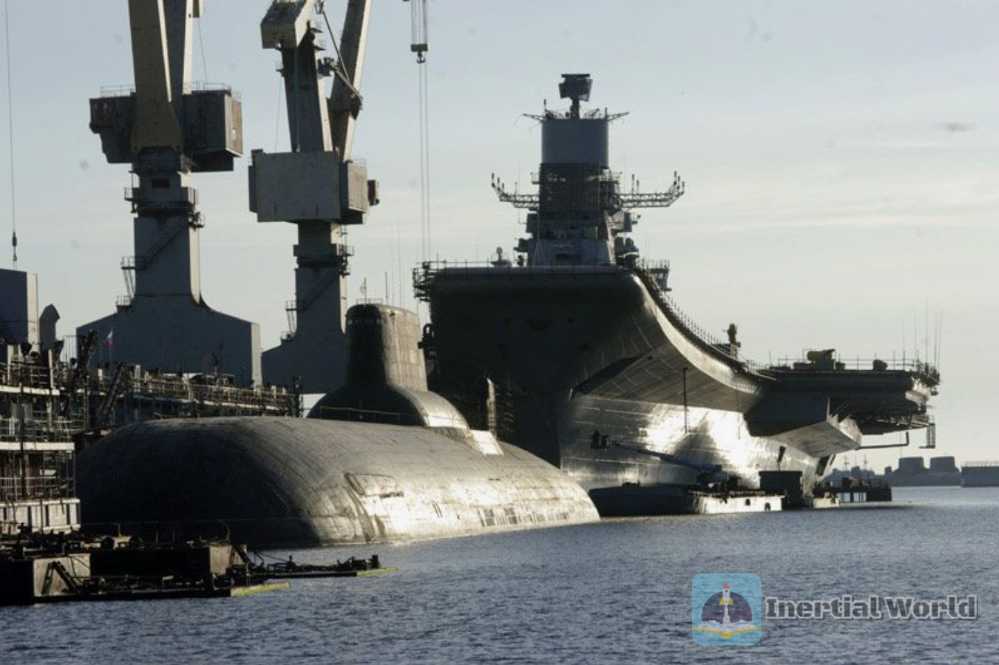
Nuclear submarines are the heavy weapons of a great power, and large strategic nuclear submarines are the military artifacts of the world’s top powerful armies. After all, the Type 941 cannot adapt to the requirements of the Russian army after the disintegration of the Soviet Union, and it is not even suitable for the Soviet army with full passive defense under Gorbachev’s "new thinking". The Type 941 has been completely retired, becoming a faded yesterday’s glory in the yellowed pile of old papers, but for the global powers with gradually stronger naval power, the Type 941 still has extremely important reference and research value.


